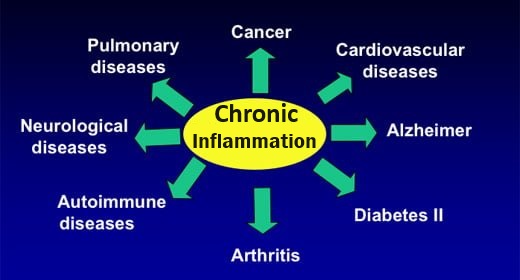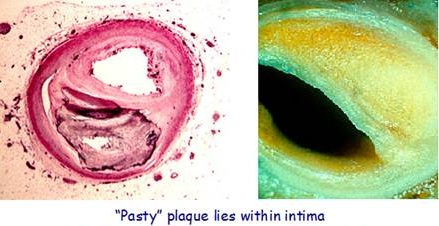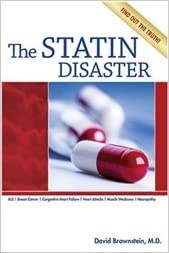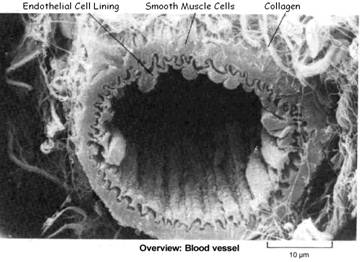Atherosclerosis / CVD involves weakened arterial walls due to a chronic vitamin C deficiency
Cardiovascular disease (CVD) is currently the leading cause of death in the United States, Canada and England.

"CVD" typically refers to an ischaemic heart disease
Atherosclerotic plaques are not the cause of CVD. Instead they are a means by which the body repairs damaged arterial walls, weakened by a lack of collagen resulting from a long-term, low-level Vitamin C deficiency.
Facing an ascorbate deficiency, your “clever” body has a “Plan B” to prevent you from dying from internal bleeding if a lesion were to rupture. A special, “sticky” cholesterol carrier, called Lipoprotein(a), is attracted to a lesion, where together with some other substances, it forms a temporary repair patch, called “plaque“.
In the short-term, this stopgap “plaque making” mechanism is literally a life-saver. However, if an ascorbate deficiency continues, then the plaque continues to grow, eventually narrowing the arterial throughway and causing high BP and a reduced blood supply (ischemia) to the target organs, with their consequential damage. Worse, if a piece of plaque breaks off and blocks one of the small arteries supplying blood to the heart or brain, we are facing the all-too-familiar heart attack or stroke.
The answer to what is really going on in CVD was discovered over a decade ago by two men:
- The brilliant, biochemist, physicist, molecular biologist Dr. Linus Pauling (1901-1994). The world’s only recipient of two unshared Nobel prizes (Madame Curie received two, but shared) and awarded nearly 40 honorary degrees, PHDs and DScs;Pauling was one of the first scientists to work in the fields of quantum chemistry, molecular biology and orthomolecular medicine. Here he is referenced for his work on the involvement of vitamin C and the amino acid L-lysine in heart disease. Dr. Pauling died at the age of 93, devoting his last years working with Dr. Rath to discover the root causes of cardiovascular disease.
- The renowned Dr. Matthias Rath, a research physician from Germany.
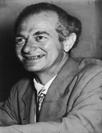
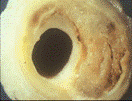
Rath and his colleagues at Hamburg University found that the main constituent of plaques was not in fact LDL cholesterol (as formally believed), but a similar cholesterol-based protein called lipoprotein (a) or Lp(a).
Rath and Pauling met, and then decided to work together to answer the following questions:
Why do lesions form on the arterial wall in the first place?
Why do the Lp(a) plaques form on the lesions?
Why do heart patients and others at risk of cardiovascular disease and stroke have more LDL and Lp(a) cholesterol in their bloodstream?
Rath and Pauling discovered that CVD is primarily a consequence of Vitamin C deficiency
To properly REPAIR and RENEW constantly decaying arterial walls (and also every other tissue in the body), your body must produce a binding protein called COLLAGEN, which requires ample quantities of Vitamin C (aka ascorbate or ascorbic acid) – if you don’t have enough Vitamin C to make collagen, then artery wall lesions will not repair properly; if you took no Vitamin C at all, you would experience scurvy, the lesions would rupture and you would die of internal bleeding. This is how British sailors died in the 1500-1800’s on long voyages without access to Vitamin C.
Collagen
The most abundant protein in your body – the “cement” that holds together arteries, skin, cartilage, ligaments, and tendons; decreases significantly with age, and its deficiency is the source of several serious degenerative diseases (e.g. rheumatoid arthritis).
The body’s connective tissues, including the arteries, are constantly undergoing repair and maintenance utilizing the binding protein, collagen, whose production requires large amounts of vitamin C (ascorbate). Without ascorbate, artery walls will fall into disrepair and form lesions (abnormal tissue), which usually results from disease or trauma.
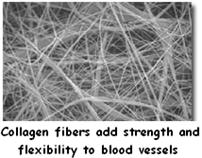
If you don’t have enough Vitamin C, then LDL and Lp(a) cholesterol will accumulate in your bloodstream. The liver intentionally manufactures Lp(a) and LDL cholesterol as components of repair material for a C-deficient damaged artery (lesions are usually formed in the highest-stress areas, such as at the entrance to the coronary arteries); additionally ascorbate is used to convert cholesterol to bile for excretion through the intestines.
Your body compensates with a temporary “fix” to at least try to keep you alive long enough to reproduce and so keep the human race going. In a healing response to a breakdown of collagen, Lp(a) – “The Repair Man” is attracted to the lesions, forming repair patches, called arterial plaques.
Combining with other repair substances (E.g. fibrin), the plaques grow in size until the blood flow is partially / completely cut off (usually due to blockage by a blood clot that forms when the plaque ruptures) or an artery bursts. Eventually, possible consequences include:
- Angina;
- Arrhythmia;
- Heart attack. Usually arterial plaque ruptures and forms a blood clot (thrombus) which travels (embolus) until it blocks the coronary artery providing blood to the heart; other consequences related to ischemia (low blood supply) include, high blood pressure, angina, arrhythmia or death;
- Stroke. By blocking / bursting (hemorrhage) the small arteries in the brain; this can lead to limb paralysis on one side of the body, and/or an inability to understand or formulate speech, or to see one side of the visual field in both eyes;
- Death.
Most mammals produce their own Vitamin C and do not have CVD (exceptions include humans, non-human primates (apes, monkeys, lemurs), guinea pigs, the European hedgehog and the fruit bat) – most animals convert glucose to Vitamin C in their kidneys or liver.
Animals that produce their own ascorbate generally do not have CVD and do not have significant Lp(a) in their bloodstream. Humans are no longer able to produce Vitamin C, because some time long ago there was a mutation of the gene which encodes for the enzyme L-Gulono-g-Lactone, necessary to convert glucose to Vitamin C. As such, cardiovascular disease is not really a disease, but rather the consequence of a missing enzyme!
Some things don’t change!In 1593, Admiral Hawkins informed the British Admiralty that a daily ration of citrus fruits prevented the Dainty’s crew from getting scurvy during a voyage to the South Pacific. This was later confirmed by Commodore James Lancaster in 1601, and in a book published by famous medical doctor John Woodall in 1636, and by a controlled study published in a book by Dr. James Lind in 1753, and by Captain James Cooke, who kept his ships stocked with fresh fruits and vegetables on his famous round-the-world trip and lost only one of his 118-man crew (but not to scurvy). Finally in 1804, 211 years after Admiral Hawkins first enlightened the British Admiralty to the solution to scurvy, regulations were enacted requiring sailors to consume a daily ration of lime juice, which totally eliminated scurvy for the British sailor, who was thereafter nicknamed “Limey”. An estimated 2 million sailors died of scurvy during this period of time. |
In 1985, Brown and Goldstein were awarded a Nobel Prize in medicine for their major finding that atherosclerotic plaque deposits formed in the coronary and brain arterial walls as a response to injury (lesions) to the arterial walls, by attaching to lysine and proline binding sites exposed in the walls by the injury.
How much Vitamin C do we need ?
In his previous research on Vitamin C, Pauling discovered that the 60mg amount of daily Vitamin C recommended by the FDA is 30 to 300 times smaller than the concentration found in other mammals. i.e. Humans, whose entire C intake must come from their diet, need to eat about 3-12 grams of Vitamin C / day to have as much ascorbate as other animals (adjusting for body weight).
In 1991 Rath and Pauling published their groundbreaking paper explaining the cause of CVD: “Solution to the Puzzle of Human Cardiovascular Disease: Its Primary Cause is Ascorbate Deficiency Leading to the Deposition of Lipoprotein(a) and Fibrinogen/Fibrin in the Vascular Wall.”
Later, in 1994, Rath and Pauling obtained a patent on a cure for atherosclerosis that comprises Vitamin C and Lysine. Later, proline was added to improve the cure.
“Beef up” your arteries with vitamin C. The Rath-Pauling therapy is a simple, inexpensive, nutrient-based therapy to normalize your cholesterol and/or high blood pressure. It also gently heals your arteries by supplying ingredients to restore arterial wall integrity, allowing your body to remove plaque.












